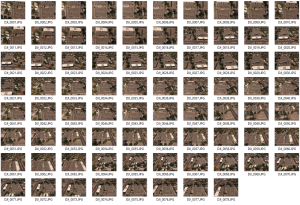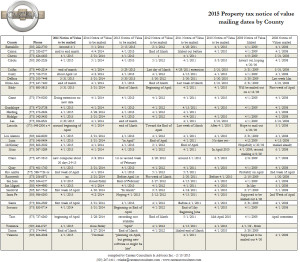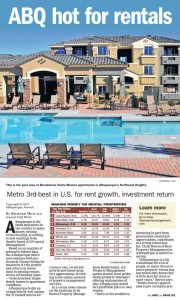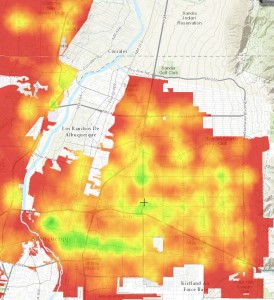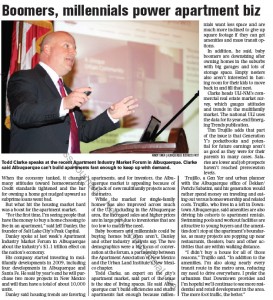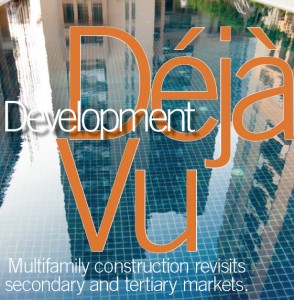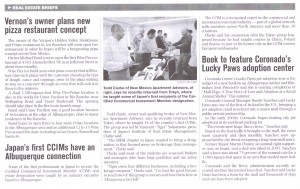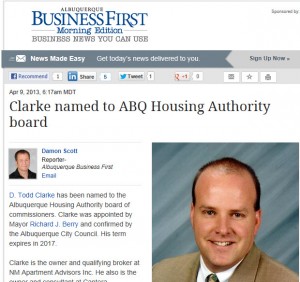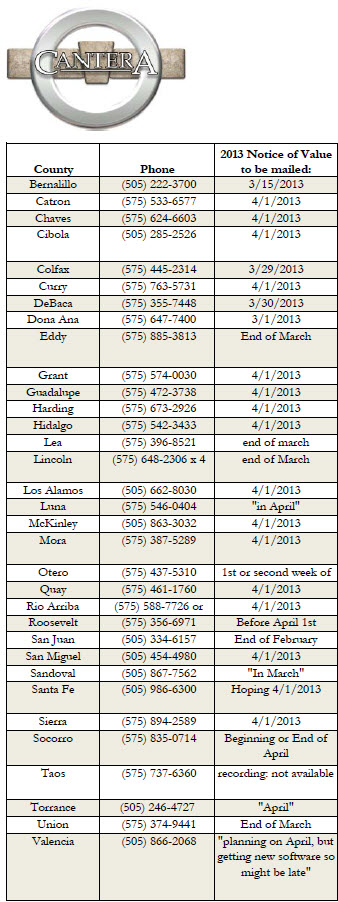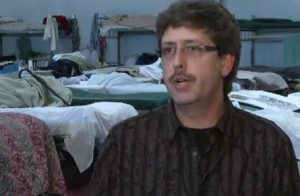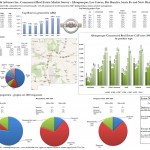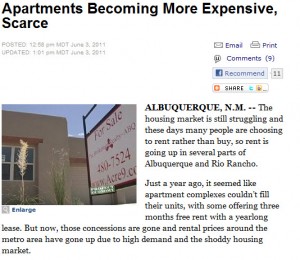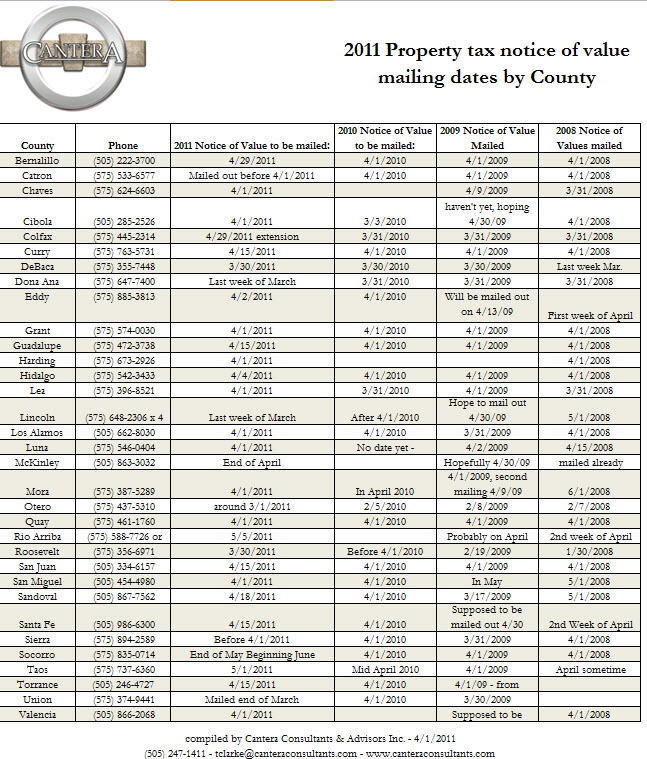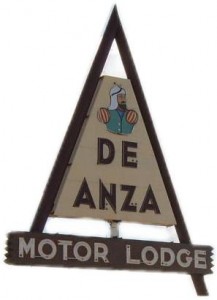Please note that the deadline to file a protest is 30 days after the date on the notice of value.
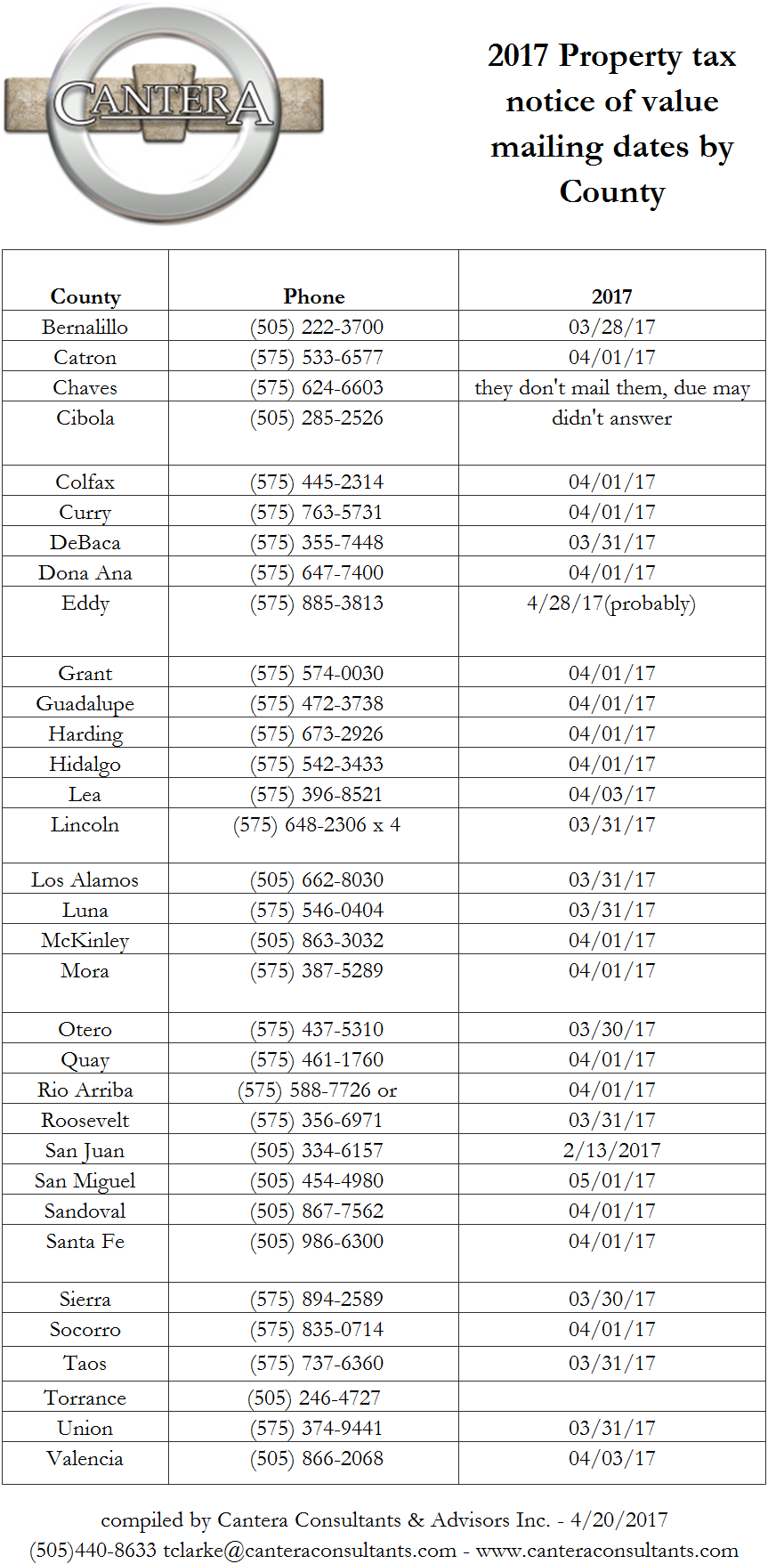
Category: Albuquerque
AtliZure – 3D models from your drone photography
This was taken today with our DJI Phantom 4 Drone and the Altizure software.
The drone made 5 paths (or passes) around the property, taking a total of 78 images that you then upload to Altizure and it formulates this 3D model.
This is what the background computer processing (called camera poses) of that image looks like:
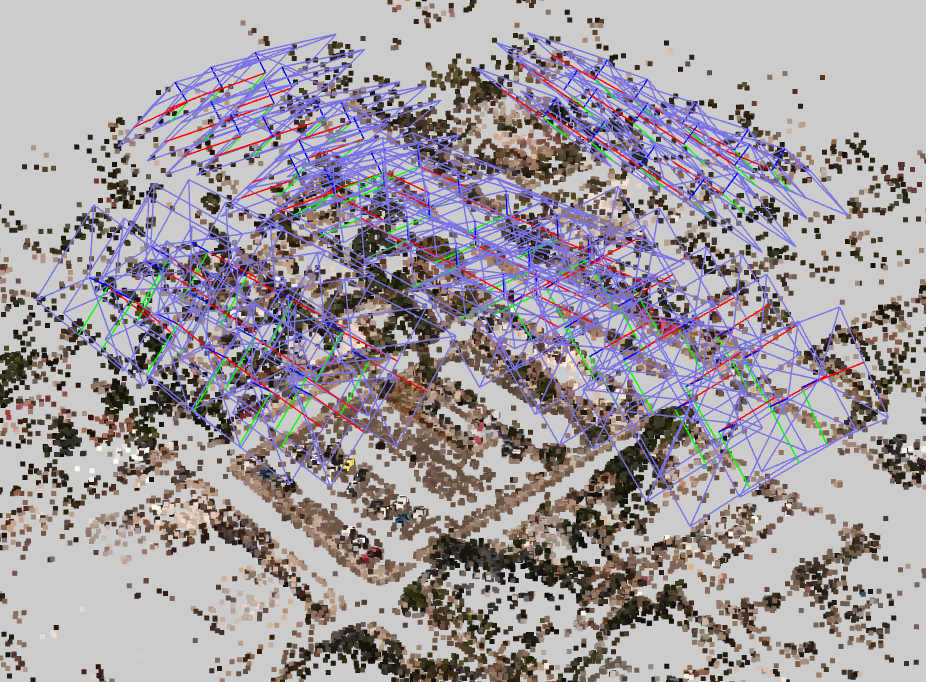
Property Taxes – notice of values update for 2015
Cantera Consulants & Advisors has just updated its notice of value dates from each of the county assessors.
Please remember that you only have 30 days from the date of the notice of value to protest your property taxes.
A PDF version of this table can be found here.
Bernalillo County Property Tax Protest board rules on LLC/refinancing issue at formal hearings
The Apartment Association of NM in the form of Attorney Gene Vance and property tax consultant Todd Clarke, represented apartment portfolio owner, Richard Fox, in the handling of his property tax protest case.
In the case, the property owner held title in a series of related Limited Liability Corporations (LLCs) for estate purposes. He and his wife had refinanced their properties in 2007 and again in 2013. In both cases the lender(s) required the property owner to move the ownership of the property from the LLCs, to his personal name before moving them back to the LLC.
In 2007, this related party transfer did not trigger a removal of the 3% cap on property value increases.
In 2014, the assessors office, based on a legal opinion obtained from the State of NM on a related property tax issues, removed the 3% cap and increased property values.
The formal boards ruling for this landmark case can be found here:
FinalDecision-Order-FoxPortfolio-10202014
The opening narrative for the case is as follows:
Attorney Gene Vance and I are here today not just representing our client, Richard Fox, but also the apartment industry through the Apartment Association of NM who has taken a keen interest the number of their members who have experienced a sharp increase in the property tax from the removal of the 3% Cap. These removals did not occur because the owner of the property sold their property, added on to their property or even rezoned their property. These removals were done solely because the property owner took advantage of historically low interest rates to refinance their property. In a post economic meltdown economy, many of the lenders required these owners to handle these refinances through related entity limited liability corporations or LLCs.
Before we lay out our case, I wanted to share with you a story. When House Bill 366 was approved and passed in 2001 and implemented in 2002, its intent was to protect the elderly widowed single family home owner in Santa Fe who risked losing her property due to a sudden and swift property tax increase caused by out of state, Hollywood moguls, purchasing properties around her.
Now, a dozen years later, our case focuses on a similar individual, our clients, Richard and Linda Fox, who have built up a small nest egg of rental investments over decades of ownership, tending to their residents and keeping their properties in good condition.
As part of their estate planning, to ensure continued uninterrupted management of their properties, and to plan for their future, they created a series of related party LLC’s. The need for this estate planning tool became more obvious when both Richard and Linda suffered from cancer in the last few years. Unfortunately, Linda did not survive, and she passed away earlier this year. Richard, who is in his 70s, and is like the elderly widow this law was created for, has had his protection removed by this assessor’s administration in a manner that is not consistent with previous administrations or other county assessors and in direct conflict with state law and a number of legal precedents.
Today, our evidence will show that Under the New Mexico Limited Liability Company Act, there was no change of ownership from substituting the owner’s name on the deed for that of the company. There was no beneficial interest transferred to a separate entity. Interpreting the law to cover these transactions is contrary to the policy behind the 3 per cent cap.
While we all are aware of the inequities created by the property tax lightning law and various follow-up Band-Aid approaches to fixing these, it is ironic the aged population this law was intended to protect is now being used as a weapon to raise their property taxes.
Tech Fiesta 2014 – ABQ
Come listen to the latest trends in recruiting millennials with housing to our market.
Guest Speakers: Todd Clarke CCIM and Dale Dekker
http://www.techfiestaabq.com/
State of the apartment market – 2014
Property Tax update – 03/24/2014
The following is a quick update on property tax issues from 2013 and a preview of what we can expect in 2014 and 2015.
2013 protests
As you may recall, I did not expect 2013 to be a year that we would see much in the way of reductions. I did encourage some of my clients to file protests, because we had a new assessor and the top commercial appraiser had moved from Sandoval to Bernalillo. Unfortunately for us, that top commercial appraiser moved back to Bernalillo county mid 2013.
The reductions we were able to get in 2013 were a result of squeezing a bit more from the stone, rather than a new approach or philosophy.
Bernalillo and Sandoval county are aggressively reappraising right now – in fact, you can monitor Bernalillo countys progress here -http://www.bernco.gov/Assessor_Canvass . Remember, they are required to obtain the most accurate and correct information, and its been my experience if you are helpful on the front end (i.e. let them into your building, hold the other end of the measuring tape), they are more inclined to help you when it comes to the revaluation. Residential reappraisals are occurring on a map basis (i.e zone atlas page by zone atlas page)
As it relates to commercial properties, the only major increase I expect for 2014 will be for mini storage, assisted living and banks as they have completed their new valuations for these properties types. I’ve been told that the balance of commercial will show up in the 2015 notices of value.
Legislative update:
Our various trade associations like AANM and RANM were very busy this year tracking bills, responding to our legislators, and pushing back on bills that would have a drastic impact.
House Bill 178 (attached) was probably the most problematic of the bunch as it restored the increase of property taxes at time of sale starting in 2015. (a fuller update on this and other bills can be found below my signature line. Thanks to RANM for the update).
The Apartment Association of NM is working on raising funds and partnering with other associations to have a white paper completed this year that can be used to create new legislation to address the property tax lightning mess in the long 2015 session. Email me if you want more info on this process.
Property tax course
If you have an interest in learning how the property tax system works in NM, I will be teaching an 8 hour course a week from today (March 31st) at the Apartment Association – registration is mandatory (so we know how many books to print and bring and because we have limited seating – you can register at – www.canteraconsultants.com/cca2014 . Those of you in the real estate business should know that the course is approved for 8 CE credits. If you have an interest in learning how the property tax system works in NM, I will be teaching an 8 hour course a week from today (March 31st) at the Apartment Association – registration is mandatory (so we know how many books to print and bring and because we have limited seating – you can register at – http://www.canteraconsultants.com/cca2014 . Those of you in the real estate business should know that the course is approved for 8 CE credits. The course is $99 if you want a electronic (PDF) version of the book and $149 for a printed copy of the 300+ page textbook.
Notices of value for 2014
I will be updating our notices of value spreadsheet (2013 notice of value dates can be found here – http://www.toddclarke.net/?p=1656)
NOTE: The Bernalillo County assessor has sent out a notice to all property tax consultants that they need to update their client authorization signature pages. They have had issues in previous years with consultants “slamming” clients and filing without their approval. What does this mean for you? Just send me your notices of value (as they arrive) and I will send you a new contract for 2014.
While I am not expecting increases this year, I do expect previous properties that we have protested may have corrections in info that may lead to increases.
Thanks,
Todd
RANM update
2014 New Mexico Legislature Update []
From David Oakeley, RANM Government Affairs Director
February 21, 2014
The thirty day New Mexico legislative session is over and RANM was successful in getting three bills passed, two of them sponsored by RANM. House Bill 185 (HB185), the Commercial Real Estate Broker Lien Act and Senate Bill 124 (SB124), the Real Estate Foreign Broker Bill, passed in both the Senate and the House. SB110, the Real Estate Appraisers Act, was another high priority bill supported by RANM, also passed.
The bills will be sent to Governor Susanna Martinez for action.
THE 2014 SESSION
The whirlwind thirty day session had a less contentious feel due in part to a much narrower Democrat majority in the House of Representatives and with upcoming elections, neither side appeared anxious to engage in hostile partisan politics.
Some of the bigger issues were the budget, minimum wage, capital outlay and the Navajo Nation gaming compact. The $6.2 billion budget—dubbed a compromise—passed both Houses with apparent input from the Governor’s office. It includes a minimum 3 percent raise for State employees and teachers. The fear was that the budget battle would derail the session and result in the need for a Special Session.
A bill that would have increased the minimum wage in New Mexico narrowly passed in the Senate but failed in the House. It was the other way around for the Navajo Nation gaming compact that would have opened the door for two more Indian Casinos. The bill narrowly passed in the House but was defeated in the Senate.
HB55, the $232.6 million capital outlay bill, which funds projects throughout the state, also passed. $184.8 million of the projects will be funded with severance tax bonds, the remainder from other state funds.
THE RANM BILLS
One of the RANM-introduced bills that awaits the Governor’s signature—HB185—passed the House and was on the Senate calendar when time ran out. The Real Estate Appraiser Act was signed into law last year but amendments were introduced and passed this year to clear up some of the language.
HB 185, the Commercial Real Estate Broker Lien Act sponsored by Representative Antonio “Moe” Maestas, allows Real Estate Brokers to file a lien against commercial (not residential) property for leasing commissions owed by the owner of property if the property owner had a written agreement with the real estate broker to pay leasing commissions. You can download a copy of the bill by going to this link: http://www.nmlegis.gov/Sessions/14%20Regular/bills/house/HB0185.pdf
The other bill on the Governor’s desk is SB124,which amends the Real Estate Foreign Broker Bill, was introduced by Senator Phil Griego. The act was amended to add a definition of Commercial Real Estate and to allow out-of-state brokers to practice real estate in New Mexico with respect to commercial real estate only, provided they enter into a transaction-specific written agreement with a New Mexico real estate broker. For a full copy of this bill go to:
http://www.nmlegis.gov/Sessions/14%20Regular/bills/senate/SB0124.pdf
SB110 is the Real Estate Appraisers Act sponsored by Sen. Sander Rue, proposes to amend the Real Estate Appraisers Act in order to comply with federal law and to provide for appraisal management companies, trainees, an appraisal subcommittee, uniform standards or professional appraisal practice, automated valuation models, broker price opinions and criminal background checks.
OTHER HIGH PRIORITY RANM BILLS OF INTEREST
A “tax lightning bill” opposed by RANM, HB178 introduced by Representative Brian Egolf, never made it out of committee and died. RANM sent out a “Call to Action” on this piece of legislation. RANM members responded, many contacted their representatives, and it helped narrow the vote. It did narrowly pass in the House, 32-30. RANM considered this bill unconstitutional and deemed the caps on property evaluation would have the opposite effect and negatively impact real estate sales.
Another bill that addressed tax lightning, SB260 introduced by Senator Steven Neville, died in committee. This bill attempted to fix the tax lightning problem with the valuation and taxation of residential property. This bill transitions valuation to a percentage of the “current and correct” standard set in the Property Tax Code.
THE RANM LEGISLATIVE PROCESS
A total of 1,082 bills were introduced this thirty day session—549 in the House of Representatives and 533 in the Senate. Of all these bills only 126 of them survived; a success rate of a little over 11.6 percent.
Each bill usually gets one or more committee referrals, and if the bill survives all committee votes (some never even get a committee vote and thus fail to advance), they then face debate on the floor of the chamber in which they were introduced. If it passes it then goes to the other chamber where the process starts again. If the bill survives the second floor vote without amendment, then and only then, will it get consideration by the Governor who has 20 days after the session adjourns to take action which would be either to sign the bill, veto the bill, or not sign it (called a pocket veto).
RANM’s staff reviewed every bill and made recommendations to RANM’s Legislative Committee as to which pieces of legislation had a direct or indirect impact on the membership. A total of 104 bills—about 10% of those introduced—were so identified. They were categorized (taxes, water, regulatory, economic development, commercial, mortgage/lending, etc.), assigned the level of interest (high, medium, low), and whether they should be supported, opposed or simply monitored.
OTHER BILLS OF INTEREST TO RANM
The bills previously mentioned were high priority bills. Some other bills of interest included:
SB89, introduced by Sen. Peter Wirth, this bill would have affected the Gila River basin in southwest New Mexico, but never made it out of the Senate Conservation Committee. It would have required the Interstate Stream Commission to divert flood waters.
HB51, introduced by Representative Yvette Herrell and passed in both chambers, amends the Right to Farm Act, a pro-agriculture bill, passed both houses. It amends the Right to Farm Act to provide that no agricultural operation may be deemed a nuisance unless it is operated negligently. The New Mexico Department of Agriculture said about this bill, “Across the United States, nuisance law suits are being filed based on the encroachment of urban presence adjacent to agriculture activities. The consequence of nuisance or negligent lawsuits provides the potential to impair the state’s industry and the state’s economy and provides a negative impact on the ability for the industry to operate.”
HB273, introduced by Representative Ken Martinez and Senator Mary Kay Papen, is an economic development bill that passed both house and senate. It Proposes the Economic Development Grant Act, with a stated purpose to provide matching state grants to local and regional economic development agencies to expand their economic development and job-creation capacities through employment of economic development professionals. This bill appropriates $3 million for matching grants.
HJR8, this joint resolution introduced by Representative Jim Trujillo, authorizes the Energy, Minerals and Natural Resources Department to sell surplus property on East De Vargas Street in Santa Fe. The property was formerly used by the State Parks Division for administrative offices.
SM11, introduced by Senator Michael Padilla, (Identical to HM15), requests the United South Broadway Corporation’s Fair Lending Center, a nonprofit community development corporation that provides housing and foreclosure legal defense statewide, to convene a task force to study the foreclosure process and make recommendations to protect neighborhood and community stability, prevent unnecessary or improper foreclosures, and preserve the rights of families.
Albuquerque Hot for Rentals
In in Albuquerque Journal article dated October 8th, 2013, Albuquerque was rated the 3rd best market in the country for rent growth.
What is your city’s walkability map?
This is Albuquerque’s walkability map – the green areas are the most walkable, the red areas the least (walkable in the sense of close proximity to grocery stores, coffee shops, schools, etc.)
What is your walkscore?
ULI NM – 2013 Commercial Real Estate Value Survey
The NM Chapter of the Urban Land Institute released its 2013 Commercial Real Estate and Value survey last week at the joint Apartment Association of NM and Urban Land Institute Market forum luncheon.
Previous value and cap rate surveys performed by Cantera Consultants & Advisors Inc. can be found here for 2011 and here for 2010.
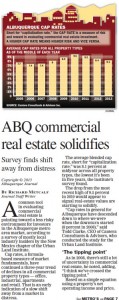 Read the full article from the ABQ Journal here
Read the full article from the ABQ Journal here
The complete 11 x 17 version of the survey can be found by clicking here.
ABQ Biz 1st – Boomers, Millennials power apartment biz
At the annual Apartment Association market update last week, Todd Clarke discussed the latest generational drivers of apartment demand. View the complete article by clicking here.
DeJa Vu an update to multifamily in CCIM’s Journal
This month’s CCIM magazine has an update article on the multifamily industry.
“In some markets, demand is up and the existing multifamily properties are simply obsolete. “We need to replace our inventory,” says Todd D. Clarke, CCIM, chief operating officer of NM Apartment Advisors in Albuquerque, N.M. “The average apartment was built in 1965, is red brick, pitched roof, master metered, and built furnished — none of which is what the baby boomers and Generation Y are looking for.” Developers are expected to deliver 560 units in Albuquerque this year — up from 158 in 2012, according to Marcus & Millichap.
Generation Y, in particular, is expected to be key to multifamily leasing and development. A significant portion of this 87.3 million-strong population segment will form new households as they leave their parents’ homes during the next two years, Marcus & Millichap notes.”
Albuquerque Realtor has connection to Japanese CCIM’s
The Albuquerque Business News covered Todd’s recent class and pinning ceremony for the newly minted CCIM’s in Japan:
Todd Clarke named as commissioner to Albuquerque Housing Authority
Property Tax Update
Spring is almost here, and that means its time to start looking in the mail for our notice of value property tax forms.
First on a macro level – the legislature is 12 days away from completing its 60 day session, and they are working on a couple of bills that could impact property owners.
House Bill 117 – appears to be DOA, and would have allowed a some disclosure to go into place – http://www.toddclarke.net/?p=1651
House Bill 521 – is working its way through various committees and currently has the support of RANM and the county assessors, but is being opposed by Apartment Association of NM which is attempting to make modifications to the bill – http://openstates.org/nm/bills/2013/HB521/documents/NMD00012252/
In it’s current form, HB 521 would not go into effect until 2014.
I recently taught the property tax course for a Santa Fe brokerage firm and they had invited two of the better county appraisers to attend. They were kind enough to share an interesting bit of info that should make tracking our notices of value easier – in 2014, notices of value should have a side by side comparison this years value vs. last years – an example can be found here – http://www.toddclarke.net/?p=1661
Notice of value dates
On a micro level – we have contacted all 33 assessors across the state as to their likely release dates for notices of value. A complete list can be found here – http://www.toddclarke.net/?p=1656 . Please note that their is an update for Bernalillo County (see below).
Changes at Bernalillo County
Although notices of value were prepared to go out earlier this year, Bernalillo County has a new assessor who has requested an extension until May 1st, 2013. For those of us who own commercial properties, their current valuation is in limbo as the commercial team is looking to hire a new commercial manager to provide direction for this years notices of value, all of which has led to a great deal of uncertainty as to what this means for values this year.
Class
If you need Continuing Education (CE) hours, or you think you would like to handle your own cases, we are offering our 8 hour “Understanding NM’s property tax system course” on 4/2/2013. The course is $99 if you use a PDF version of the textbook, or $149 if you need a printed one – seating is limited and registrations can be taken here – http://www.canteraconsultants.com/registration
As always, if you have any questions, please do not hesitate to contact me.
Thanks,
Todd
Notice of value dates for NM County Assessor’s
Our most recent survey of county assesor’s shows that most intend to send out notices of value on or before April 1st, 2013.
If you would like to compare these results with previous year – click here for our PDF version NM-CountyAssesorsNOVDates-2013-01242013 .
Legaslative update – NM Property taxes
Proposed Senate Bill 117 has been introduced (see attached) as a possible solution for property tax lightning.
The following represent my thoughts about this bill:
Currently this part of the state statues reads as follows:
PROPERTY TRANSFERS–COPIES OF DOCUMENTS TO BE FURNISHED TO ASSESSOR–PENALTY FOR VIOLATION
Whenever a deed or real estate contract transferring an interest in real property is received by a county clerk for recording, a copy of the deed or real estate contract shall be
given to the county assessor by the clerk.
A county clerk who willfully fails to comply with this section is guilty of a petty misdemeanor, punishable in accordance with the Criminal Code.
This was later updated for residential properties in 2004 (see bottom of this email for the gist of that change)
Although I would support a disclosure bill for all real estate in NM, this bill doesn’t do that, AND it creates less transparency that we currently have.
It also has a number of issues:
1. It conflicts with the current law for residential disclosure, which in itself has had a number of historical problems and issues (from the assessors and the property owners perspectives). A new bill should address those issues.
2. Limited use bill – for those that thought this bill might create a fairer system of values, it won’t, because it limits the assessors use to creating an summary index of value. My assumption is that the bills author hopes to use this to force the assessors to hit the “reset” button on all values by showing that their total portfolio is less than 85% of market value. That isn’t a bad idea, but it will lead to all values being increased. (removing the 3% cap on residential).
3. Most assessors lack resources (i.e. computer/GIS system) to comply with this bill. That in itself is a whole ‘nother box of pandoras as Former Govenor King would say.
4. Creates information that is not public information (what is the point of transparency if we allow the government to hide information) – this is a major problem as we have cases where the assessors has used an affidavit to support values in a formal hearing, but redacted the relevant information (because its not public), thus denying the property owner their right to correct bad information and the formal board has allowed the evidence to be used to force a higher value. Although I am sure it would never happen, a “lazy” appraiser could create an affidavit that has their target value, redacting everything else and the property owner would be defenseless to challenge that comparable sale.
5. The value language is a problem – I have a large 2012 apartment sale, where an escrow has been set aside for increased property taxes (same owner had the property for 25 years) – the language would require that escrow to be included in the calculation of value, even though it didn’t add value at all, but was rather a self financed insurance policy.
6. If we disclose price, we should also disclose size as that is relevant to value. And Zoning. and Use and Tenant info. and Financing. it takes the entire bundle to create value.
7. The bill lacks teeth for enforcement – what happens if we don’t file the affidavit? current law makes it a misdemeanor and $1,000 fine for each party (seller, buyer, title company). This net will capture the small property owner, but miss the larger institutional owners (as it does now).
8. It lacks verification – the bill should require that the affidavit be notarized as I’ve had several cases where a value affidavit has been presented, and no one has knowledge as to who actually signed it.
9. It creates unnecessary red tape and bureaucracy – what if the parties can’t agree on how to fill it out? Whose obligation is it really?
10. It requires the buyer and seller to agree on the allocation between real and personal property. This might seem like a small issue, but I’ve had buyers and sellers argue over whether 200 refrigerators are part of the real or seperate personal property. Currently, the system allows each party to make its own allocation.
11. Ultimately, what is the goal for this bill? I think if we knew that, we might know how to support them (or not).
Finally, if we decide to support it, I would recommend removing the emergency portion of the language. I have too many multifamily and commercial clients that could be impacted by this and they need to be able to plan for it in 2014, not be surprised as notice of values are being sent out in 2013. Along those lines, I’ve attached our latest survey of county by county and when notices of value are going out so we can see the impact it would have right now.
One more thought – I would run this by the title companies, to see if they would be willing to record deeds based on this (it increases their liability).
I’ve finally come around that transparency is key to a fairer property tax system, and if others are on the same band wagon, we would be better suited to draft our own bill and make sure it prohibits transfer taxes (NM had disclosure until 1970 and it was removed as part of the constitution rewrite to eliminate transfer taxes).
Thats all for today,
Todd Clarke CCIM
After January 1, 2004, New Mexico’s status as a “non-disclosure state” as relates to property sales data changed. Beginning in 2004 any person “presenting a deed, real estate contract,…” for recording with the county clerk is required to also file with the county assessor within thirty days of filing with the county clerk, an affidavit relating to the transfer. It is required that the affidavit contain the following information:
1. The names of the transferors and transferees
2. The current mailing address of both
3. The legal description of the parcel
4. The full consideration paid for the parcel
5. The value and a description of any personal property contained in the sale.
The law states that the assessor shall “…index the affidavits in a manner that permits cross-referencing to other records in the assessor’s office pertaining to the specific property” and “The affidavit and its contents are not part of the valuation record of the assessor”. This indicates, and some county assessors have stated, that the affidavit should not be used to increase the value of the subject property. The correct use of the affidavit then is as verified comparable sales data.
There are a number of exceptions to the requirement to provide the affidavit. In general these are for transfers that don’t represent what we think of as an actual, market conveyance of property. These exceptions include:
1. A deed that results from payment of a real estate contract
2. A lease or easement
3. A deed wherein the grantor is a government entity
4. A quitclaim deed to clear boundary disputes
5. A conveyance executed pursuant to a court order
6. A deed for am unpatented mining claims
7. An instrument solely to provide or release security for a debt
8. An instrument that confirms or corrects a previously recorded deed
9. An instrument between husband and wife or parent and child with only nominal consideration.
10. An instrument arising out of a tax sale
There are several others exceptions along these lines, including the conveyance of a property to a trust with the same ownership. A person who fails to file the affidavit in the required time frame, or who provides false information, is guilty of a misdemeanor and can be fined up to $1,000. As well, any employee, or former employee of the assessor who willfully releases this information is guilty of a misdemeanor and can be fined up to $1,000 per occurrence. An exemption is make for release of data as part of the formal protest process.
What is Residential?
Per the tax code, “residential property” means property consisting of one or more dwellings together with appurtenant structures, the land underlying both the dwellings and the appurtenant structures and a quantity of land reasonably necessary for parking and other uses that facilitate the use of the dwellings and appurtenant structures; as used in this subsection, “dwellings” includes both manufactured homes and other structures when used primarily for permanent human habitation, but the term does not include structures when used primarily for temporary or transient human habitation such as hotels, motels and similar structures;
That is clear for a single-family but what about a 20 unit apartment complex? What about a 200 unit complex?
THANKS TO NAIOP for getting the word out about this bill.
Recent update on apartment property tax lightning
Both the Albuquerque Journal and 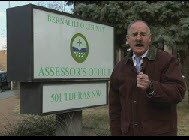 Channel 13 tv news have run recent overviews on the latest on apartment property tax lightning.
Channel 13 tv news have run recent overviews on the latest on apartment property tax lightning.
RANM course – 9/14/2012
This file is for the IRR course at the RANM conference 9/14/2012.
This is the file – filled out for a sample deal – IRR-Model-v12-FilledOutSampleDeal
And this is the file as a blank work sheet DTC-IRR-Model-v12-blank
Full agenda can be found here.
MFA Keynote presentation
NMMFA-HousingSummit-ResidentialUpdate-08222012-v2NMMFA’s keynote presentation for August 22nd, 2012 (4.5 meg PDF) “Matching Global Trends with Local Values”.
Upcoming NM MFA housing seminar
RANM fall conference
Apartment Property Tax Lightning update – 2011
On the 30th of January, 2012 our firm had a formal property tax protest hearing in front of the Bernalillo County property tax protest board.
The hearing took approximately 2 and 1/2 hours and the Bernalillo County assessor was represented by one commercial appraiser, one residential appraiser, the head of the residential department, as well as the county assessor.
We framed ourside of that case that this was not a not a decision of “value”, but rather implementation of the law and that the assessor’s office had not been executing the current laws consistently for all apartments. The assessor’s office framed their case as one of “value”, and we stipulated to the assessor’s updated value if the board found in favor of the assessors (this means that your property will receive a reduction either way, the only question is how much of a reduction).
Since we had close to a dozen apartment property tax lightning cases that had the same issue, we respectfully requested that the board here the arguments for all property’s and implement them individually on each property (this allowed the board to hear a dozen cases in 2.5 hours vs. 30 hours).
The outline document that is attached served as our narrative as we walked the formal property tax board through the following steps:
– demonstrate that your property is classified as residential
– demonstrate that your property had experienced more than a 3% increase
– demonstrate that other counties have been executing the law with no more than a 3% increase
– demonstrate that the Bernalillo County assessor’s office lost apartment tax lighting cases in 2010
– pull apart the logic underlying the assessor’s case as to why apartments should be treated different than single family homes
– pull apart the logic underlying the assessor’s case as to why apartments should be treated the same whether they are owner occupied or not
– share with the board the stipulated agreement we negotiated with the county in 2010
– remind the board of former board decisions that have found in favor of the apartment owner
– remind the board of former district court decisions that have found in favor of the apartment owner
Finally, we were able to get one of the appraisers to testify that the assessor’s office had a policy of rolling back apartments to the 3% over previous years value, but only in cases that had been previously protested, which demonstrated an uneven application of the law.
The assessor’s office presentation was focused entirely on how they had arrived at the value for the protest.
Unofficially, we have been informed from 3 different sources (including the assessor’s office) that we have prevailed in these cases, but as of this date, have not received written confirmation. As soon as we do, I will forward a copy for your files as well as an invoice showing the new value. The treasurer should then have their records updated prior to the May 2012 payment window.
If you would like a refresher on how our county got to where we are on apartment values – you can find a series of updates on our website at http://www.toddclarke.net/?s=property+tax, with the most detailed explanation at http://www.toddclarke.net/?p=969 .
Please email me if you would like to receive copies of the outline and/or the exhibits presented.
Rent vs. Own
Homelessness in Albuquerque – video update
We have been following Albuquerque’s homeless story for quite a while.
This video update was recently featured at the City of Albuquerque’s state of the city speech.
Robert Nelson at Metropolitan Homelessness Projected shared this update with us:
“Greetings!
I just wanted to write and share a new video that the city produced for the Mayor’s State of the City Address this past Wednesday. We’ll be reaching some milestones very soon and I wanted you to know about them. To date, 43 people have been housed in permanent housing and we’ll probably reach 50 in the next week. We’ll keep pressing onward to house 75 people by February 2012. With this rapid increase of housing, I want to also thank you for your help volunteering for us over the past few months. Because of you, we have been able to get this initiative going from the ground up – from Survey Week back in February to delivering furniture and housewares to those who were newly housed to the ongoing conversation on how we sustain housing for our clients. Thank you.
The link below is a video not only of the initiative and where we’re headed, but it also includes some of the stories of the people that have lived on the streets for years and finally moved into housing. Please share this video with your family, friends and colleagues and help us spread the word about our mission to end homelessness. Hope this message finds you well and thank you again for your support.
Robert Nelson | Metropolitan Homelessness Project”
Moment of NM Zen
I wanted to share this stunning video with you – this is one of the many reasons New Mexican’s love New Mexico!
Homelessness in ABQ update
 The Albuquerque Journal has an update on the homeless survey that was performed earlier this year.
The Albuquerque Journal has an update on the homeless survey that was performed earlier this year.
As you may remember, I participated in the survey earlier this year, and was dumbstruck by the stories the individuals I met shared.
Although the focus on the article is about one individual who has made it into housing, then fallen out, and is working to get back in, the part of the story that left me the saddest was the number of people who have died since we surveyed them.
Those of us who own housing, who work in the housing industry must to more to help initiatives like the City of Albuquerque’s Albuquerque Heading Home as well as non-profits like Metropolitan Homelessness Project and Joy Junction to eliminate homelessness.
(BTW, I should mention that Mayor Berry received the Humanitarian award for his dedication on this issue. Having been on his team, I can tell you his desire to eliminate homelessness involved a lot more than the camera time many people might have seen and the survey of the homeless quickly turned into an emergency plan that the Mayor and City Councilors funded to get people out of the sub freezing temperatures and in shelter).
Valuation survey for NM Commercial Real estate released.
Cantera Consultants & Advisors has just released its 2011 value survey for NM Commercial Real Estate. The survey reflects the collective wisdom of industry professionals in NM.
Although Cantera uses the survey primarily for the benefit of it’s during property tax protest hearings, the survey has become staple in the commercial real estate market and is widely used and quoted by many of the brokerage, appraisal firms and county assessors in NM.
The most interesting trend reported in this year’s survey is the indication that most of the commercial property types have turned the corner on decreasing values as CAP rates have started to decrease (slightly).
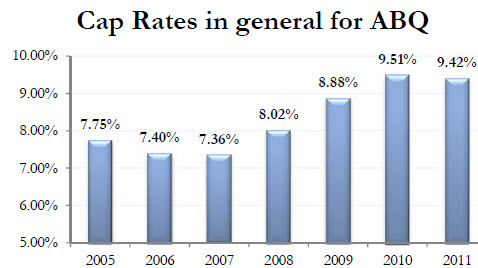
Tomorrow’s edition of the Business Outlook in the Albuquerque Journal will highlight information from the report.
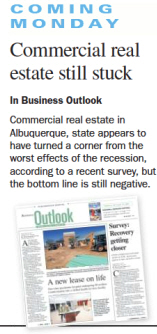
Last year’s survey results can be found here.
The 2011 value survey can be found CCA-Survey-10012011-v10.
CCIM Live update – Aerotropolis webinar now online!
Last week I had the pleasure of introducing and interviewing Greg Lindsay, author of Aerotropolis. CCIM has just posted his webinar live.
Tapping into people’s memories as part of your social networking strategy
OR, using Groups effectively on Facebook.
As someone who has covered, spoken and taught courses on social networking, I can tell you this the fastest evolving part of the internet today. Facebook membership is rumored to be over 750 million people, or 20% of all of the business people on the internet today.
During the last few years I have seen mildly ineffective to downright disastrous uses of social networking, and the successful uses are fewer and far between.
Today I would like to focus on one of that success by focusing on a local Facebook group page that grew its membership from 30 to 15,000 and experienced over 40,000 posts in one weeks time.

The group Remember when in Albuquerque… had a simple concept – encourage local Albuquerque’s to share their memories of by gone places, people, and events.

The original idea came from Laura Reynolds, a Realtor in Las Cruces, who came across a Facebook group that allowed people who grew up in Ft. Worth to share memories. Laura suggested to her husband that he start a group about Albuquerque.
Steve started the group, Remember when in Albuquerque and quickly had 30 members. As those members started to tell their friends, and started posting their Albuquerque, memories, growth started to accumulate exponentially, and Steve requested a handful of us help administer (myself included).
I kept track twice a day of the growth of the group:
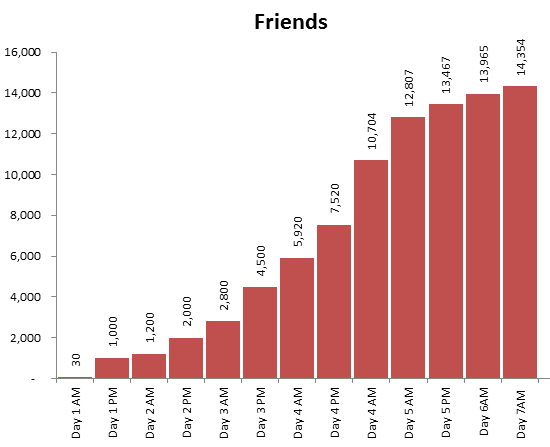
While the occasional commercial does popup on the group and there has been some sniping about deleted posts, the group has continued to grow as more people share their memories about Albuquerque.
Although many people know that four generations of my family has lived and worked in Albuquerque, many don’t know that I am an Albuquerque history buff and have a large collection of old photos, postcards and books. What better venue to share these? As I shared, others chimed in, and my “friends” counter increased by another 15% or so. (No, I don’t know all of them, but if they love Albuquerque history as much as I do, why would I tell them no?)
The group has received recent coverage from the local to TV new on KRQE as
As well as a front page article in the Albuquerque Journal:
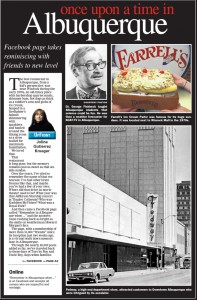
Is this a short term fad, or a long term trend?
For now, I would say long term trend. Although Facebook doesn’t share average time spent on any one group, a common expression from group members is how much fun they’ve had strolling down memory lane, and how much of their day has flown by.
Even after growth in the group stabilized at 15,000 (or so members), the media coverage has exposed the group to new people who are asking to join, creating that ever increasing spiral of increasing exposure, which is truly any marketers dream.
All in all, I’d label this a “sticky” success.
Book review: Best read for 2011: Aerotropolis

Aerotropolis, the way we’ll live next
Authors: Greg Lindsay & John D. Kasarda,
Publishing Info: Farrar, Straus and Giroux, Nonfiction, First edition published March 1st, 2011
As an international instructor for the CCIM institute I discovered that the book, Aerotropolis: the way we’ll live next dovetails nicely with what the just-in-time delivery model as a primary driver of demand for industrial space that we teach in the CCIM 102 course, I would highly recommend it to anyone in commercial real estate.
As a rabid book consumer, I will easily digest about 100+ books a year, and without a doubt, Aerotroplis: the way we’ll live next has become not only my favorite book of this year, but one of my all time favorite business books. It is one of those rare books that I thoroughly enjoyed reading that I found myself moderating how much I could read daily so I can push the ending of the book out as long as possible.
My favorite magazine, The Economist recently offered a glowing review of Aereotroplis, stating “In Aerotropolis, John Kasarda of the University of North Carolina and his co-author, Greg Lindsay, convincingly put the airport at the centre of modern urban life.”
The theme of the book is that successful cities of the future will be wrapped around successful airports and those cities that can’t adapt may be passed by. Its authors state the books hypothesis as an equation related to time “The aerotropolis is a time machine. Time is the ultimately finite commodity setting the exchange rates for all the choices we make.”
Author and reporter, Greg Lindsay, expands and expounds on the John Kasarda’s original idea that airports are the highways of the future. As a former Fast Company and Wired magazine reporter, Mr. Lindsay racks up the frequent flyer miles talking with civic leaders, CEO’s and company logicians as he interviews them on their home turf about the importance of air transit to their communities, companies or supply chains future.
As a fellow traveler, I reminisced about Mr. Lindsay’s travels to well-known airports like Chicago’s O’Hare, Atlanta’s Hartsfield, Amsterdam’s Schiphol, or even Hong Kong’s International, but I was green with envy over his trips to Dubai’s Al Maktoum International Airport or South Korea’s Incheon airport and adjoining master planned Songdo International Business District. One story of Mr. Lindsay tracking his gift of flowers from the Aalsmeer flower auction in Amsterdam to his mother’s front porch will endear Mr. Lindsay to the reader as an extremely diligent reporter and respectful son. Even more surprising than his few thousand mile journey for flowers was his mother’s reaction.
Some of the books concepts in the book are eye opening such as “The world’s urban population is poised to nearly double by 2050, adding another three billion people to places like Chongqing. We will build more cities (and slums) in the next forty years than we did in the first nine thousand years of civilized existence. The United Nations predicts the vast majority will flood cities in Africa and Asia, especially China.”
Or this quote about South Korea “South Korea’s capital is the archetypal twentieth-century megacity, doubling in size every decade or so since 1950 to twenty-four million inhabitants—the second most populous on earth after greater Tokyo.”
Or my favorite quote about a Chinese based manufacturer: “We had barely crossed the border before he opened his laptop and began walking me through the true costs of those shipments. He’d built a widget calculating every conceivable variable: the weight, volume, value, and quantity of the products in question; the lead times for sourcing and building them; time spent in transit; their shelf life; the spread between paying his vendors and being paid himself; the cost of money in the meantime; and the cost of returns. An entire calculus, in other words, underlies the pivotal question of our era: What is the price of speed? The widget’s answer: slow is more expensive. The only thing faster than a FedEx 777 Freighter out of Hong Kong is the velocity of money, and the last thing Casey wants to pay for are the days his parcels are stuck on a boat. Obsolescence sets in the moment they leave the factory. “Revenue evaporation,” he calls it. “Air freight is key,” he muttered while running the numbers. “We like to work with products that can go by air. We build them in Shenzhen, and they’re in New York two days later. Time is often our number one currency, and the dollar is second.” ”
And this quote summarized the breath taking feelings I experienced in my many visits to China for CCIM’s education program: “China is placing the single biggest bet on aviation of any country, ever. Even before the crisis and China’s subsequent stimulus, the central government announced as part of its Eleventh Five-Year Plan that it would build a hundred new airports by 2020, at a cost of $62 billion. The first forty were ready last year. The vast majority lie inland, hugging provincial capitals and secondary cities bigger than any in the States. Full-scale aerotropoli are planned for China’s western hubs, Chongqing and Chengdu, and its ancient capital. Besides airports, China laid as many miles of high-speed railroad track in the last five years as Europe did in the last two decades. The trains, in turn, are meant to keep people off the highways, to which China’s adding thirty thousand miles—enough to eclipse the American interstate highway system. China’s planners have internalized the lessons of America’s Eisenhower-era infrastructure boom, designing a world-class system for moving people and goods quickly, cheaply, and reliably across any distance, whether locally by highway, regionally by rail, or globally by air. The plan is to pick up and move large swaths of the Delta hundreds or even thousands of miles inland. There is nothing to stop them.
And this quote on where the future global cities will be “Finding another five hundred million passengers 7should be easy. China has anywhere between 125 and 150 cities with populations greater than a million. The United States has nine; Europe, thirty-six. When the first phase of China’s airport-building boom is complete, the number of hubs handling thirty million passengers annually—more than Boston’s Logan or Washington’s Dulles—will have risen from three to thirteen, all of which will be the host of aerotropoli. By the time they’re finished in 2020, 82 percent of the population—1.5 billion people—will live within a ninety-minute drive of an airport, nearly twice the number today.”
The book dovetails nicely with some of my other favorite business reads like Marc Levinson’s “The Box: How the Shipping Container Made the World Smaller and the World Economy Bigger” and Sasha Issenberg’s “The Sushi Economy: Globalization and the Making of a Modern Delicacy” both of which deal with just in time delivery and creating new markets.
Additional topics addressed in Aerotroplis include Peak Oil vs. Peak Food, globalization as a tool to pull the poor into the middle class vs. the carbon footprint of globalization via air travel, and the true cost of air travel in both economic and environmental terms.
If you enjoy Aerotroplis as much as I did, you might also read the June edition of Southwest Airline’s Spirit magazine as Mr. Lindsay has recently penned an article titled “Corporate Latter”. In this article he builds on the concepts discussed in Aerotroplis and discusses how technology has allowed us to shift away from being tied to an office, setting up shop at any location (http://www.spiritmag.com/click_this/article/the_corporate_latter/) . One economic development guru and author, Mark Lautman, is pushing this idea as the next evolution of cutting edge business recruitment – to scale down the benefits big corporations receive so communities can chase the highly mobile, quality of life comes first businessperson/consultant who eventually expands their business and hires staff. According to “When the Boomers Bail: A Community Economic Survival Guide”, this segment of our economic businesses is one of the fastest growing.
Not only would I highly recommend you read Aerotroplis, I would encourage you to purchase copies to share with your family, friends and clients as the conversations started from the concepts in the book are engaging, enlightening and very relevant to anyone with commercial real estate.
Todd Clarke CCIM
Aerotropolis can be purchased at: http://www.amazon.com/Aerotropolis-Way-Well-Live-Next/dp/0374100195/ref=sr_1_1?ie=UTF8&qid=1306590616&sr=8-1
Bernalillo County property tax update for apartments

If you own an apartment in Bernalillo County – the county assessor has obtained an extension on sending out notices of value. They will not be mailed out tomorrow, but should be sent out on 7/1/2011
Apartments become more expensive
Thanks to Melissa Montoya for covering the latest in apartment trends on KOAT TV 7.
First responses from 2011 Census of homeless – in ABQ they are finding housing.
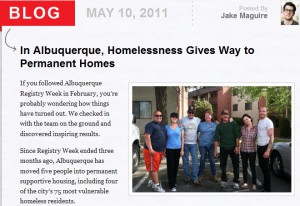 An update from our from the Albuquerque Heading Home homeless survey we helped with earlier this year.
An update from our from the Albuquerque Heading Home homeless survey we helped with earlier this year.
This article at 100k homes indicates that the first 15 homeless people from that survey have found housing – kudos to the Mayor and the folks at Albuquerque Heading Home for making this happen!
Property tax presentation for NM IREM Chapter
can be found here:
IREM-PropertyTaxUpdate-05052011-v2
thanks again to the IREM chapter for allowing me to provide them an update and overview of NM’s property tax system.
Bernalillo County property tax udpate for multifamily properties:
Earlier today, the Bernalillo County assessor announced that her office has sought and obtained approval to delay sending out notices of value for apartment buildings until June 15th, 2011.
This means the deadline to file a protest will be 30 days after that, or July 14th, 2011.
Single family and commercial property notice of values will be mailed out later this week with a deadline to file of May 30th, 2011.
As you know, last year was a tumultuous year for property taxes and apartments. Although our firm was able to obtain a significant reduction in apartment values, at the end of the day, this was done through strategy not a ruling from the formal tax board or the legal system. A legal ruling has yet to be made on whether apartments should have the same 3% cap as single family homes.
Those owners whose cases were not resolved are awaiting rulings from a handful of judges in district court. As was the case in previous years, it seems likely that one or two rulings will free up the balance of the pending litigation.
I would assume the assessor’s intent is to encourage one of the many judges to make a ruling prior to June 15th, 2011 deadline with the intent of using that ruling as direction for how to handle apartment values.
I believe this course of action is wise as it is going to take legislative, judicial or executive branch level action to correct the many property tax lightning issues.
Thanks,
Todd
Notice of value dates for property tax bills
A new form of advertising – your house
Thanks to Gizmodo.com for sharing from Adzookie.com which is a UK based company that is offering to pay homeowners mortgages if they let them paint their house with advertisements.
Although the Gizmodo posting indicates the advertisement is only in UK, when I went to their website it looks like they are up and running in the USA as well!
RFP De Anza motel – Albuquerque
The city of Albuquerque is looking for development teams to redevelop the historic De Anza Hotel. A full copy of the RFP can be found by clicking here and a copy of the market study we did for the City can be found here.
Of the many consulting assignments I’ve had the pleasure to work on, this was one that I probably learned the most. Our stakeholder sessions included some of the original employees who worked at the hotel in its hey day and remember the pink cadillac the owner used to pickup VIPS as well as the numerous political announcements made there.
Something very unique to the hotel is the priceless artwork embedded in the main common area space. The original developer, CG Wallace, hired native american’s to depict an medicine ceremony with life size Shalako dancers. To the best of historian’s knowledge, this artwork is the only piece like this that can be found off of a reservation.
my first iPhone app help client’s calculate their property taxes
Very excited – as of 5 minutes ago, our iPhone app to help client’s calculate their property taxes for commercial properties in Bernalillo County went “live” in the iTunes store! It is only 99 cents, and if you provide us feedback to improve version 2 and leave feedback, I’ll gladly send you a buck!
If you own a commercial property in Bernalillo County and you would like to compare your property’s value against the resolved cases from 2010, click here – http://itunes.apple.com/us/app/taxessor/id419811562?mt=8 to try it out.
The App is only $.99 and if you leave us a review and email me feedback at tclarke@nmapartment.com so we can improve version 2, I’ll gladly refund you a buck.
Thanks to Mark and Jamii at SWCP for making this happen.
Support for the app can be found here – http://www.taxessor.com .

